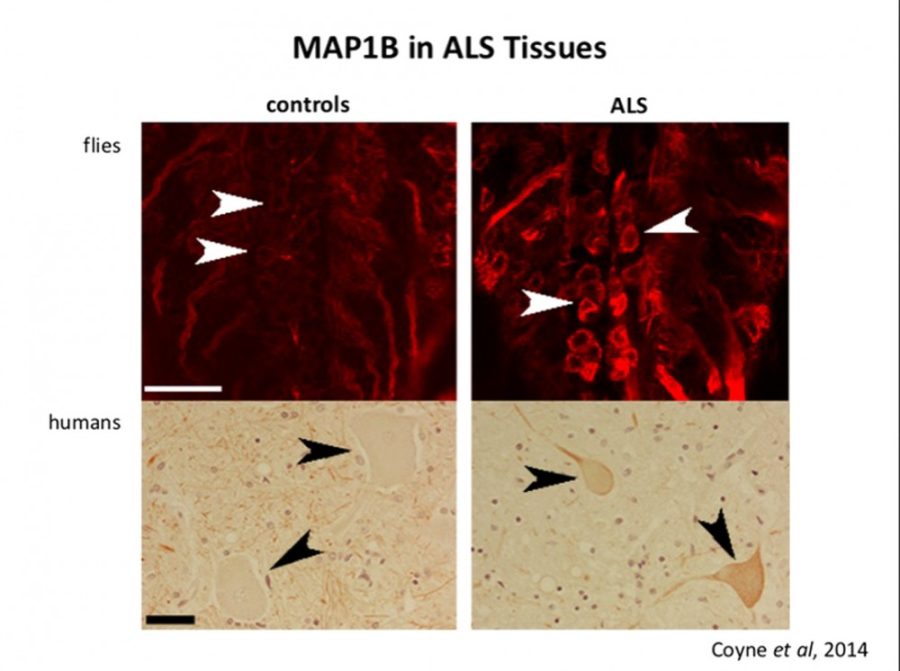Microtubules are the highways of the cells, providing transport and stability. Researchers have previously linked microtubule problems to amyotrophic lateral sclerosis, and now UA researchers have definitively connected an ALS gene to deficits in microtubule stability.
Alyssa Coyne, a neuroscience graduate student in Daniela Zarnescu’s lab, recently published a paper in Journal of Neuroscience showing the molecular link between a gene associated with ALS, TDP-43, the disease of ALS and microtubule stability.
Their research hinges on futsch, a messenger RNA. Messenger RNA, known as mRNA, are molecules that carry genetic information from the nucleus to the sites where the information can be translated into proteins.
Futsch mRNA encodes a protein associated with microtubule stability in flies and has a human homolog called MAP1B, Coyne explained.
They discovered the connection between TDP-43 and Futsch “by accident.” An incorrect hypothesis led to a candidate approach where likely targets of TDP-43 were examined. That eventually led them to discover that futsch mRNA is inhibited by TDP-43, said Zarnescu, an associate professor in molecular and cellular biology.
In this disease, TDP-43 sequesters RNA and prevents it from being translated into protein. This prevents essential proteins from being made, including the microtubule stabilizing proteins they recently discovered.
“Microtubules are the main highway,” Zarnescu said. “If you have a problem with microtubules, it’s like driving home on a road filled with potholes.”
Coyne added that it was already known microtubule transport was somehow affected in the disease, “but they didn’t have a mechanism to explain this.”
“In the TDP-43 model, we see less stable microtubules,” Zarnescu said. “Microtubules are important for maintaining the structure of the neuron and transport within the neuron. Without microtubules, you cannot maintain connections between motor neurons and muscles, a key defect in ALS.”
This eventually causes neurodegeneration through the loss of nutrients and structure that result from a loss in transport.
“If the road doesn’t work properly and you can’t transport things that are essential for normal function,” she said, “then it’s like a winter storm and the food doesn’t make it to the grocery store.”
Their collaborator, Robert Bowser, chairman of neurobiology at the Barrow Neurological Institute, found analogous deficits to the findings, but they were only found in the spinal cord. This suggests some differences between motor neurons and other neurons in the brain. The majority of spinal cords of ALS patients with TDP-43 pathology showed the same deficits in microtubule stability as was seen in the fly model.
The thinking in the field is that there is a great deal of overlap between neurodegenerative diseases, Zarnescu said, where a variety of different causes lead to similar mechanisms and themes between conditions.
Coyne is planning to look at existing microtubule stabilizing drugs, typically used in cancer treatment, to see if they will reduce the neurodegeneration in the flies.
The lab is also planning to screen for compounds that inhibit the association of TDP-43 with other targets. If the TDP-43 can be prevented from sequestering other mRNAs, Zarnescu said, then it wouldn’t have the deleterious effects on the cell. This includes the breakdown of the microtubules and subsequent neurodegeneration as the neurons would be able to have the normal transport they need to survive.
“Everything that needs to go a long way takes the microtubule highway,” Zarnescu said.
_______________
Follow Amy Nippert on Twitter.









